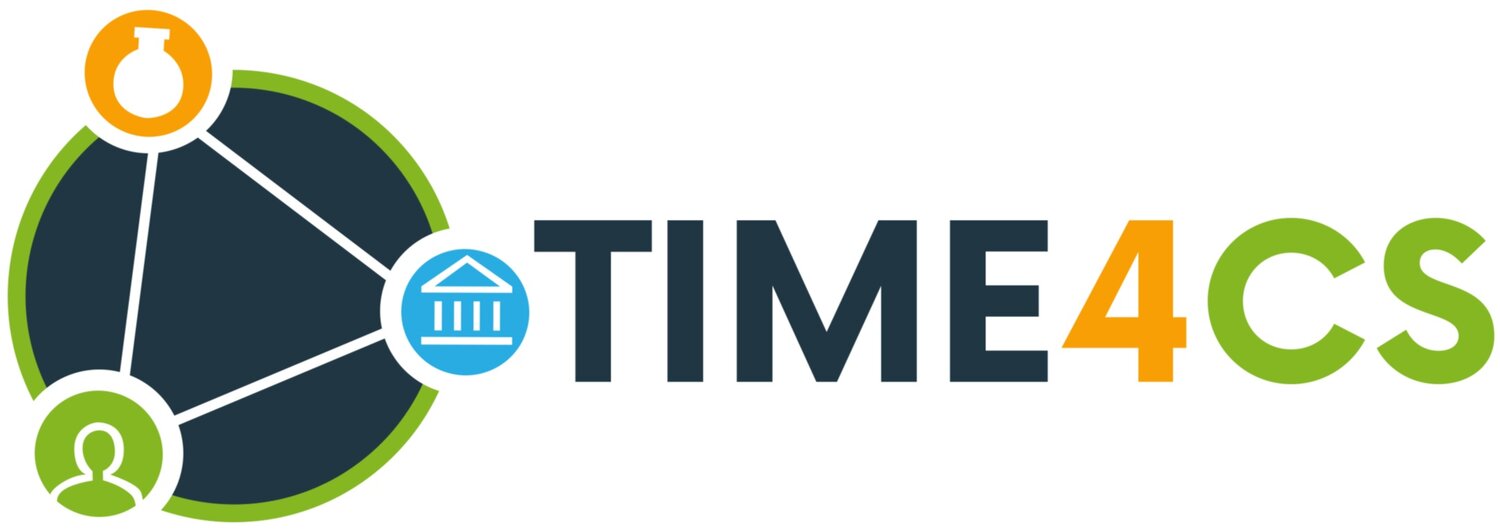Reshaping the roadmaps: adapting the institutional action plans to seize opportunities and overcome challenges
The first year of implementation of the institutional Roadmaps has passed and the four TIME4CS Implementers (T-UCC, CRG, KTU & UNISR) are currently evaluating the outcomes of their activities (Grounding Actions, GA).
In November 2021, each Implementer drafted their Roadmaps towards institutional change, compiled in the public deliverable D2.1 - “Compilation of roadmaps and Grounding Actions for the Implementers - First Version”. During the first year of implementation, the Implementers have faced several challenges, and at the same time learnt more about their institutional arrangements and possibilities. While implementing their Roadmaps, their strategies had to be adapted in order to get around obstacles and resistances as well as seize new opportunities.
This article focuses on two Grounding Actions where the Implementers had encountered some common obstacles, and introduces the strategies developed to overcome them. A complete view of the updated version of the institutional Roadmaps is publicly available on the TIME4CS Zenodo community, under the deliverable D2.2 – “Compilation of roadmaps and Grounding Actions for the Implementers - Second Version”.
Grounding Actions, obstacles and new strategies:
Appointing a CS contact point/officer
The aim of this GA is to have an internal body or contact point that could promote CS within the organisation, support the researchers aiming to get involved in or start a CS project, and centralize information regarding specific funding for CS activities and relevant events in the field. This GA entails at least three main steps: 1) negotiation with the management for opening a new position at the organisation; 2) defining the scope of the position and finding the good candidate; and 3) disseminating the new contact point information across the organisation, with particular focus on the researchers.
The two main obstacles of this GA were: the lack of institutional support, due to a poor understanding of CS, and the lack of dedicated funding to open a new position and make it sustainable. Both obstacles are typical for an organisation that is at its early stages of institutionalization of CS.
One of the strategies to overcome the first obstacle is to get familiarized and frequently updated with the changing policy landscape (European and national), and to present to the management new policies that promote the inclusion of CS and Open Science. As an example, in the Horizon Europe framework programme, Open Science and Public engagement are key requirements transversal to all calls. Stressing the importance of including Citizen Science activities when drafting new proposals to get funding could be perceived by the management as a solid argument to support the appointment of a CS contact point.
One of the strategies taken to get around the second obstacle (lack of funding to open and sustain a new position) was to build on already existing resources: assigning CS contact point responsibilities to already existing positions, such as research mangers or librarians. This strategy is less costly in terms of funding and might present less resistances from the institutional management. However, it is important to stress that this action would require to provide specific training in Citizen Science to the research managers/librarians before the CS tasks can be assigned.
Promoting and supporting incorporation of CS dimension into research projects
The aim of this GA is to raise awareness among researchers and support the incorporation of the CS dimension in their research proposals and ongoing projects. This GA entailed at least two key steps: 1) evaluate the existing knowledge of the researchers on CS; and 2) develop a raising awareness strategy tailored to the researchers’ needs and interests.
The main obstacle for this GA was the lack of interest in CS and lack of recognition of CS as a valid and useful research methodology from researchers. This obstacle was particularly more evident for the institutions working in the biomedicine field. This could be due to several factors, among them the reduced number of examples of CS experiments in biomedicine and the hyper competitive academic environment.
Some of the successful strategies to overcome this obstacle were: to avoid sending bulk invitations of CS events and rather prioritizing targeted invitations to the researchers; framing the communications in a way that speaks to the researcher’s best-self; “choose your battles” by identifying which researchers’ category could be more easily mobilised (e.g., senior researchers vs early-career researchers).
To sum up, institutional Roadmaps are very useful strategies to pave the way towards sustainable institutional changes, however these action plans are not carved in stone. It is essential to periodically adapt the Roadmaps to the institutional context in order to apprehend opportunities and react promptly to surmount obstacles.
Stay tuned to the project’s news!
Do not miss the deliverables coming out in December: follow us in social media - LinkedIn, Twitter and Facebook - and subscribe to our project newsletter.
If you are interested in starting a process of CS institutional change at your organisation, we invite you to discover our Reflection Tool on the integration of CS institutional changes -> TIME4CS Reflection Tool
Author: Eugenia Vilarchao (ESF)

